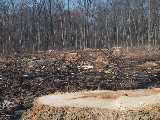|
Shown here (click to enlarge if necessary) is page 2 of the Lebanon Daily News of June 20th. 2000, found at quite some effort by our intrepid investigator. It shows, in the bottom right-hand corner, the sole notice for the meeting on June 21st., 2000 - the following day which reportedly attracted some 15 attendees.
|

|
